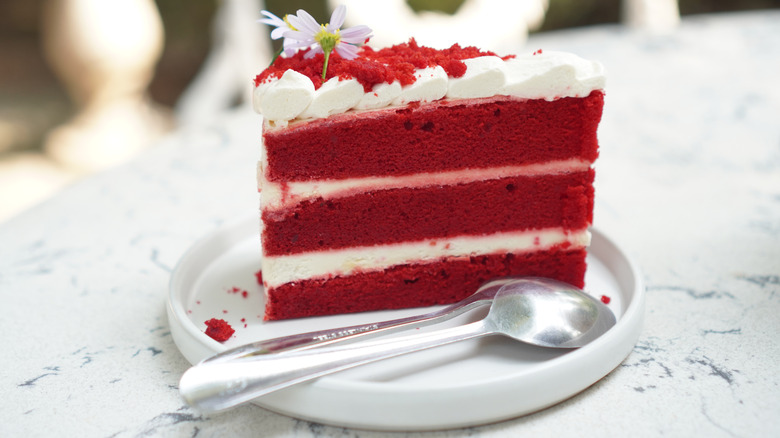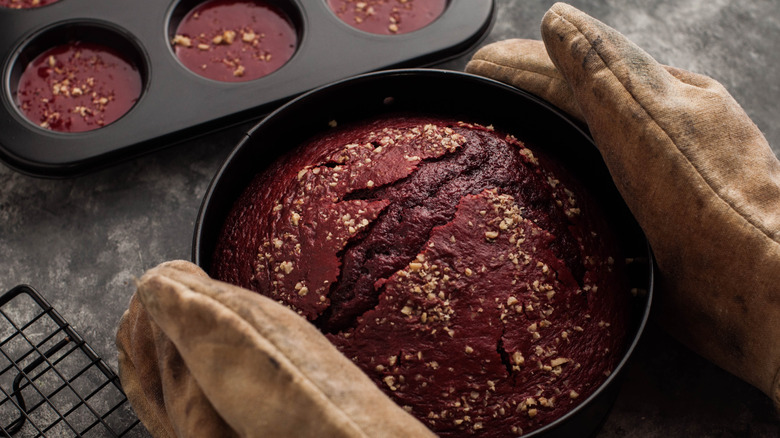The Ingredients That Gave Red Velvet Cake Its Color Before Food Dyes
Red velvet, unfortunately, is not a flavor you can find in nature. Most modern red velvet cakes get their trademark red coloring from artificial food dye. With dye being a key ingredient in most red velvet recipes, you might be shocked to learn that red velvet cake predates the invention of food dye by a few decades.
Red velvet cake's very first appearance is disputed, but we can trace it back to the Victorian era's "mahogany cakes," when cocoa powder's acidity, mixed with vinegar, gave them a reddish tint. Aside from its impacts on texture and flavor, vinegar can also add its own color to cakes, no cocoa powder needed. This is why vinegar often makes an appearance in chocolate cake recipes — it makes the finished product more vibrant. Even with such ingredients, however, these traditional cakes weren't as colorful as modern red velvet. The once subtly red cake went on a long journey to become its current saturated self.
How the recipe changed
If you tried to make this chemical reaction happen nowadays, you'd likely be unsuccessful. It's not your fault — the ingredient list might be misleading. That's because the type of cocoa powder you're buying at the supermarket (aka Dutch-processed cocoa) is totally different than what people used way back when.
Since cocoa powder is naturally acidic, most companies nowadays add a base to the mix to both neutralize and darken the ingredient. It helps desserts taste sweeter, avoiding the sharp, almost tart taste that acidic ingredients can bring to the table. So, if you're looking to bake red velvet cake au naturel, opt for a non-alkalized cocoa powder. Those who dislike artificial dyes have also used beets to naturally color their cake, along with lemon juice to boost the acidity. Beetroot powder is also a good option. It may make the cake taste less like beets overall, as opposed to using fresh beets.

